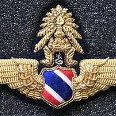Red Fanta For The Spirits.
-
Recently Browsing 0 members
- No registered users viewing this page.
Announcements
-
Topics
-
-
Popular Contributors
-
-
Latest posts...
-
59
Tourism Strong Baht and Safety Fears Weigh on Thai Tourism
Thailand better find better favorable conditions and or opportunities to attract Tourists. Other close countries like Vietnam seems to be taking away a lot of tourists from Thailand. -
3
Racial tensions high in Cincinnati as 7th brawl suspect arrested
Obviously the real victims aren't the ones on the ground. It's those that put them there. This is the thinking the loony left has created. -
658
The alarming mental decline of Donald J. Trump -- watch this space
No. No, I am not. I am further from his pathetic policy and witless polemic than you are from CA, but if being dismissive is all you've got, knock yourself out. -
3
Racial tensions high in Cincinnati as 7th brawl suspect arrested
Yup, it happens in more places than Thailand. What's surprising is that none of the assailants have been charged with attempted murder for stomping the head of a helpless victim on the ground. On second thought, I guess it really isn't surprising. -
262
BKK Bank 4 months banked method??
Thanks for first hand report. Just my opinion... obscene nonsense from a bank . Change banks asap.- 1
-

-
24
UK-Politics Exposed: Labour's Shocking Tax Deception Unveiled!
If it's not deception then it's total incompetence. There is no other explanation. Either way, your dream team of 2TK and Rachel from accounts have destroyed what was left of the UK economy after 14 years of the other (equally incompetent) lot.
-
-
Popular in The Pub











Recommended Posts
Create an account or sign in to comment
You need to be a member in order to leave a comment
Create an account
Sign up for a new account in our community. It's easy!
Register a new accountSign in
Already have an account? Sign in here.
Sign In Now